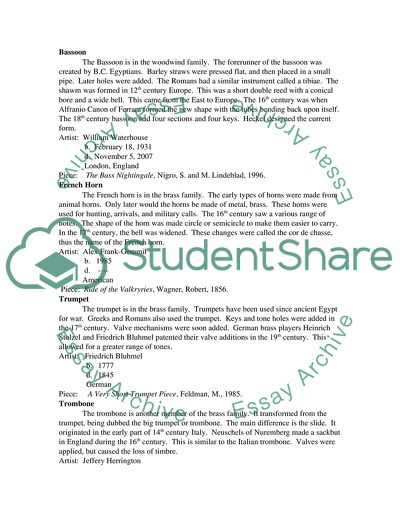History of each instrument Essay Example | Topics and Well Written Essays - 500 words. Retrieved from https://studentshare.org/miscellaneous/1549778-history-of-each-instrument
History of Each Instrument Essay Example | Topics and Well Written Essays - 500 Words. https://studentshare.org/miscellaneous/1549778-history-of-each-instrument.


